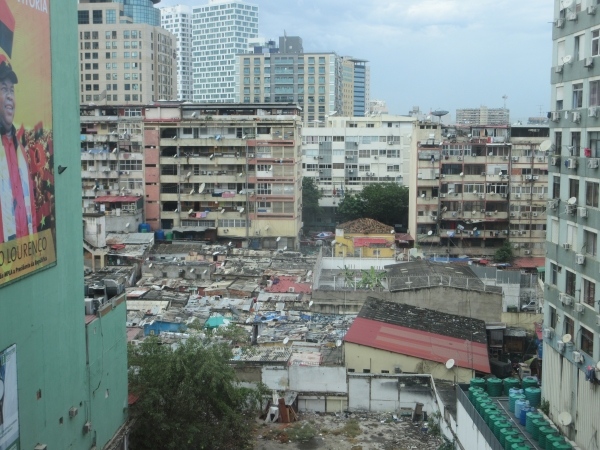How can cities in the rapidly urbanising world benefit from Smart City approaches to urban management?
I am just back from my second visit to Luanda, the capital of Angola. I was running a workshop there that was wrapping up a Smart Cities project that is part of the UK Government’s Prosperity Programme. The brochure produced by the project, and published in Portuguese and in English, looks at eleven components of Smart Cities, and highlights practical examples of UK expertise in these areas. In each case the challenge for Angola is summarised.
A Smart Cities Approach
Governance is fundamental to effective smart cities practice. So often government bureaucracies work in silos, and in many developing countries local government is desperately weak in terms of resources and powers. It is easy to prescribe the balm of “integration” and doses of “decentralisation”, but delivery is more difficult. Angola is a vast country with 18 provinces and 162 municipalities which in turn contain 559 townships. The capital, Luanda, dominates the economy and government. I explained its history and recent development in a previous blog.
The country was ravaged by war from 1961 to 2002, not the best platform on which to build smart governance practices. In a war environment you take orders not risks. Municipalities only became budget units in 2008. There are widespread reports of corruption and dismal rankings from Transparency International and the World Bank. There is plenty of scope to improve procurement procedures, for example.
In this context, the active participation of user groups in service delivery is going to be difficult to achieve. There has not been a culture of building feedback loops into programmes and projects, and no training of professionals in how to manage expectations and conflict situations.
Healthcare is a particularly problematic field. A generation of doctors and nurses were lost during the fighting and there are acute shortages. A damning video report by the New York Times shows the situation on the ground.A smart approach should start with prevention. In 2013 a WHO/UNICEF study estimated that over 9 million people in Angola lack access to safe water and adequate sanitation.
Despite its oil resources, energy supply is a problem too. There are power cuts and electricity demand is expected to quadruple by 2025. There is potential for solar energy, but currently it depends on importing the equipment. Transport is an important user of energy, and generator of emissions. Again smart management would make a difference. Satellite towns have been built but without provision of a mass transit connection to the jobs in Luanda. The daily commute is arduous and of unpredictable duration, especially in periods when the tropical rain floods the roads, as happened during my short visit.
Formality and informality
Like many countries in transition, Angola functions around a dynamic interplay between formal and informal activities. Can smart city technologies, with their capacity to decentralise decisions and generate micro-level data, offer new insights to how to manage these relations? It is something that policy makers should be looking at, and that requires recognition of the importance of informality to livelihoods and of how it works. Without this there is the risk of smart city technologies widening existing urban inequalities.
Looking at Luanda, transport is perhaps the most obvious and easy field in which to take effective action. The rush hour(s) gridlock inconveniences everyone and has economic costs, so maybe there could be political willingness to act. Four-by-fours sit in the jams alongside the informal blue minibus taxis that are the dominant form of public transport. Part of the problem is that so much road space is occupied by parked vehicles. A typical town centre road will have parked cars down its inside and outside lanes, and cars were parked three abreast and four deep on a slip road near my downtown hotel.
A paintbrush and cans of yellow paint may not be a hi-tech’ solution, but could be a start. There are no parking meters, but there is parking control which is part of the informal economy. Men sit in the shade of trees on a median strip and place an obstacle in any space immediately it becomes vacant, thus “reserving” it for their next “customer” who duly tips them. To switch immediately to a sophisticated formal system, with mobile phone alerts to where there are spaces, would destroy the incomes of these men, who would quite possibly find ways to sabotage the innovation.
Similarly, the informal taxis constitute a significant part of the local economy and are crucial to mobility and accessibility within the city. Dedicated bus lanes and some formalisation of stopping places, together with improved shelters could make a difference and primarily benefit the poor.
A more ambitious approach would be to look at the main transport corridors, such as the one I travelled down to the Chinese-built high rise town of Kilamba. Road and drainage improvements could improve traffic flow, but also be linked to better provision for pedestrians, upgraded commercial frontages, and upgrading of the informal settlements that lie behind them. Integrated planning is essential if our rapidly spreading cities are really going to be smart and inclusive.

Schreibe einen Kommentar